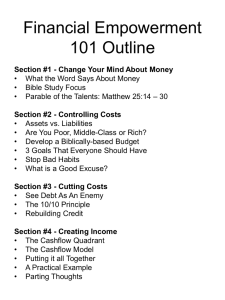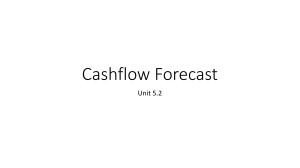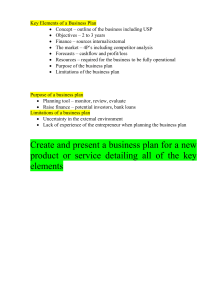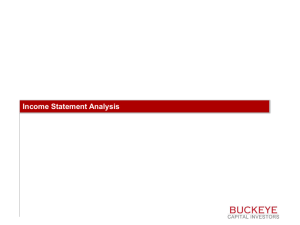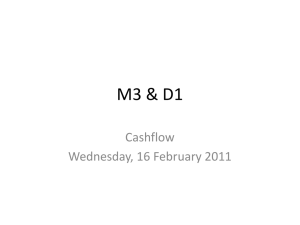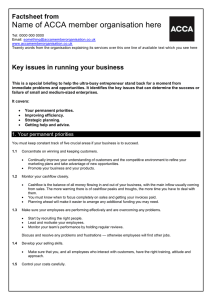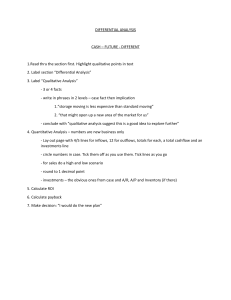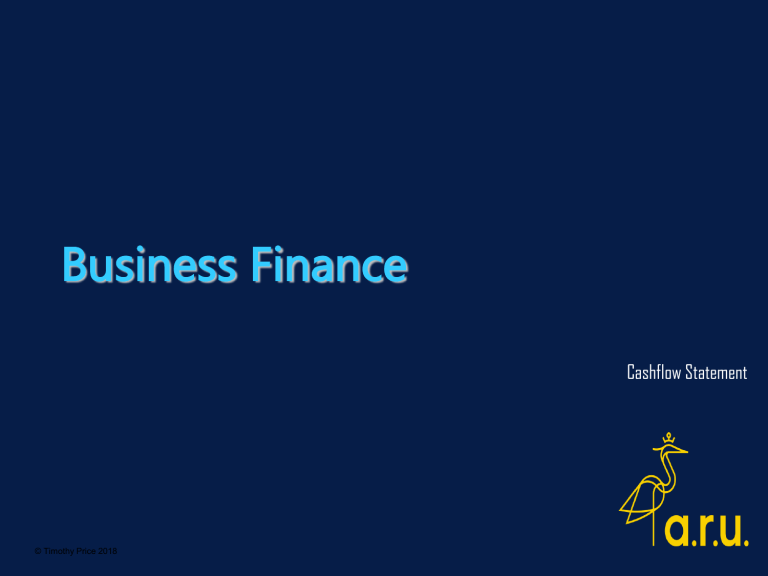
Business Finance Cashflow Statement © Timothy Price 2018 Profit vs Cash A profitable business should generate cash But a profitable business may still meet cashflow problems Certain “inflows” and “outflows” of cash do not appear as part of the profit calculation These need to be managed carefully Profit vs Cash The accrual concept – timing differences Revenues are recorded when Goods are delivered Services are provided Expenses are recorded To match the revenues they help to generate Eg when goods are sold, utilities used Not recorded when cash is actually received or paid Profit vs Cash The accrual concept – timing differences Based on the concept that the Income Statement should show the commercial activity of the business in a given period It should not reflect actual cash inflows and outflows Creates greater consistency in reporting Profit vs Cash Working Capital These timing differences are reflected in the balance sheet Sales Expenses Receivables – or Customer Advances Payables – or Prepayments Inventory bought but not yet sold Mismanagement of these can lead to insolvency! Profit vs Cash Non-current Assets These may require high levels of cash outflow at the outset Will only appear in profit later as a depreciation expense Profit vs Cash Depreciation A “non-cash” item in the profit May have a big effect, ie profit may be low due to high depreciation but actual cashflow is very strong Telecoms Energy companies Profit vs Cash Borrowing/repaying debts Borrowing increases cash in the business Repayment reduces it Neither appears in the profit Other than indirectly through higher or lower interest payments Profit vs Cash New money from owners Increased investment by the owners By issuing shares if it is a company Increases cash in the business No impact on profit Profit vs Cash Distribution of profits to owners Drawings or Dividends or Profit-sharing Decreases cash in the business No impact on profit Cashflow Statement Shows the differences between cash at the start of period and the end Makes the Income Statement match up with (“reconcile to”) the Balance Sheet
